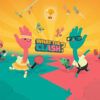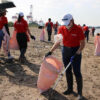The Internet can be beneficial for children as they can access information for their research activities and serves as a source of entertainment for them. However, online access also comes with dangers lurking against them.
So said Nice Quilantang, pre-sales manager for SEA at Kaspersky, as he stressed that with growing risks associated with Internet use, parents must educate their children about online usage, and making them aware of their kids’ online activities as more children become victims of online threats and abuses.
Currently, about 33.39% of the country’s population represent the 0-14 age group while 19.16% comprise the 15-25 age bracket, according to statistics from data portal IndexMundi.
Cyber security solutions provider Kaspersky detected 31-million online threats in the Philippines from January to December last year, of which 82.46% were directed from home users including kids. Majority of these users are actually using social media or Internet.
Most popular websites Filipino kids have either visited or attempted to visit from their computers include software, audio and video – 42.04%; Internet communication sites (social networks, messengers, chats, and online forums – 29.17%; e-commerce (online stores) – 16.04%; news – 4.76%; and computer games – 3.76%.
While there are benefits derived from the Internet, it also harms kids. “The bad side of it is that there can be violent or sexual content that can be accessible to children,” said Randy Dellosa of Dr. Randy Dellosa Wellness Center, noting that this is a case of sexual abuse on children as they are exposed to sexual materials.
Dellosa cited the MOMO challenge, which according to him is alarming as it is a training program to commit suicide. “It starts with de-sensitizing you from fear or pain of hurting yourself to scratching yourself and advances to jump off the building.”
Online child abuse, which is very rampant in the country, is the leading cybercrime that affects children in the Philippines, according to Quilantang. A national survey on violence against children shows that nearly one on two children, age three to 17 experienced cyber violence. Online violence, cyber bullying, and digital harassment affect seven percent of the young population.
Cyber pornography, where porn videos or photos are published in porn sites, is another online problem which makes the country a global hub for this activity. Other online dangers include cyber extortion, and addiction to social media. Emotionally, there’s a lot of depression and anxiety that come from the Internet, according to Dellosa.
With all these dangers and abuses that arise from using the Internet, Kaspersky urges parents to help their kids be secured in terms of online threats. The cybersecurity firm introduced the Kaspersky Safe Kids (KSK), a feature in Kaspersky Total Security (KTS). KSK is an application that can be installed on kids’ mobile devices or on endpoint devices or PCs with features that can be utilized to educate kids in terms of Internet usage, and manage and monitor them in terms of social networking activities.
KTS is available online at https://www.kaspersky.com at PhP2,764 (one device for one year); PhP3,801 (one device for two years); and PhP3,455 (three devices for one year). KTS can also be purchased from the on-demand subscription service through telco company Smart where a single license costs PhP30 for seven days (Text KTS30 to 8933) and P120 for 30 days (Text KTS120 to 8913).
Apart from Kaspersky, the government is also doing its share to help secure children from online threats. There are currently ongoing programs specifically with the Department of Information and Communications Technology (DICT) to safeguard kids online and these include Anti-cyberbullying, Anti-online Sexual Exploitation of Children (OSEC), and Digital Parenting.
















































































































